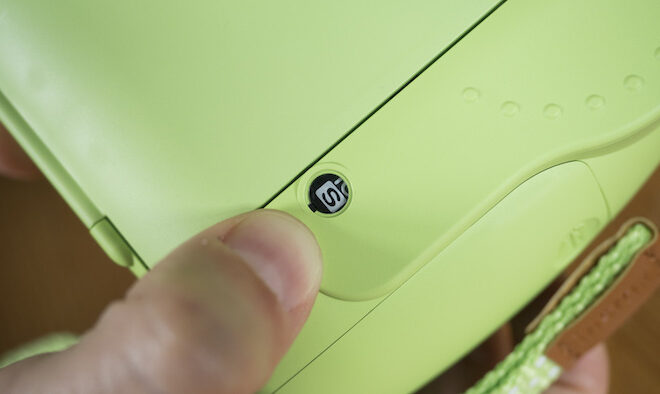
Fujifilm X100v vs X100f: Comparing Two Top-Rated Cameras
As an Amazon Associate, I earn from qualifying purchases.
Are you in the market for a compact camera with a fixed lens and retro design? If so, you’ve likely come across the Fujifilm X100 series, which includes popular models like the X100V and X100F.
While both cameras share some similarities, they also have some key differences that may affect your decision when choosing your first camera.
This article will compare the X100V and X100F in terms of their features, image quality, performance, and usability, to why the Fujifilm X100V camera is right for you. So, let’s dive into the comparison of the Fujifilm X100V vs. X100F and find out which one will be your first camera.
Fujifilm X100V vs X100F: Quick Comparison Table
Here are some quick comparisons between the two cameras:
| Features | Fujifilm x100V | Fujifilm x100F |
| Sensor | 26MP – APS-C BSI-CMOS Sensor | 24MP – APS-C CMOS X-TRANS III Sensor |
| Video resolution | 4K (DCI) – 3840 x 2160 | Full HD – 1920 x 1080 |
| Continuous shooting | 11.0fps continuous shooting | 8.0fps continuous shooting |
| Number of Focus Points | 425 | 325 |
| Dimensions | 478g. 128 x 75 x 53 mm | 469g. 127 x 75 x 52 mm |
| LCD Resolution | 1.620k dots | 1.040k dots |
| LCD Screen | Titling | Fixed |
| Bluetooth | Yes | No |
| USB Version | USB 3.1 Gen 1 (5 GBit/sec) | USB 2.0 (480 Mbit/sec) |
| Battery Life | 420 shots | 390 shots |
| Weather Sealing | Yes | No |
| Connectivity | USB 3.1 Type-C | USB 2.0 Micro-USB |
What Are the Differences Between Fujifilm X100V vs X100F?
The Fujifilm X100V and X100F are both high-end compact cameras that are popular among street photographers, travel photographers, and enthusiasts who want portable cameras with exceptional image quality.
The Fujifilm X100F was released in 2017 and quickly became a popular choice among photographers who wanted a compact camera with a fixed lens and retro design.
The Fujifilm X100V, released in 2020, is the latest model in the X100 series and comes with some significant improvements over its predecessor.
While both cameras share some similarities such as:
- A fixed 23mm f/2 lens,
- Retro design,
- Fujifilm’s Film Simulation modes,
Some key differences set them apart. The X100V has the biggest update to any camera ever had.
Let’s talk about the key differences and discuss them briefly:

Fujifilm X100V

Fujifilm X100F
Sensor:
The X100V features a new 26.1-megapixel X-Trans 4 sensor, while the X100F has a 24.3-megapixel X-Trans 3 sensor. Both sensors use a unique color filter array that eliminates the need for an anti-aliasing filter, resulting in sharper and more detailed images.
However, the X-Trans 4 sensor in the X100V has several advantages over the older X-Trans 3 sensor.
Body and Design:
The Fujifilm X100V and X100F share a similar body and design, with a retro-inspired rangefinder style that’s both stylish and functional. The X100V is slightly larger and heavier than the X100F, but both cameras feel well-built and solid in the hand.
The X100V features weather sealing, which makes it more durable and resistant to dust and moisture than the X100F.
The X100V also features a tilting LCD screen, which is useful for shooting at odd angles, while the X100F has a fixed screen.
The X100V’s viewfinder has been improved over the X100F, with higher magnification and a new 3.69 million-dot OLED panel. The X100F’s viewfinder has a 2.36 million-dot OLED panel.
The X100V measures 128 x 74.8 x 53.3 mm and weighs 478 g with the battery and memory card, while the X100F measures 126.5 x 74.8 x 52.4 mm and weighs 469 g.
While the X100V is slightly larger and heavier than the X100F, the differences are minimal and shouldn’t impact your decision when choosing between the two cameras.
Weather Sealing:
One of the key differences between the X100V and X100F is weather sealing. The X100V features weather sealing, which makes it more durable and resistant to dust and moisture than the X100F.
This means that the X100V is better suited for outdoor photography in harsh weather conditions. If you plan to shoot in wet or dusty environments, the X100V is the better choice.
Controls:
The X100V features a new control layout, with a dedicated ISO dial on the top plate and a redesigned rear joystick for easier navigation. The X100F has a similar control layout but lacks the dedicated ISO dial.




The X100F has a dedicated analog settings bar that has left right up down arrows.
Both cameras feature a traditional shutter speed dial and exposure compensation dial.
The X100V’s ISO dial makes it easier to quickly adjust the camera’s sensitivity, while the redesigned joystick is more comfortable to use than the joystick on the X100F.
Fujifilm redesigned the layout and put features at their finest. Designwise The X100V wins over the X100F.
Image Quality:
In terms of sharpness and detail, the X100V is noticeably better than the X100F. The images from the X100V are sharper and show more detail, particularly in areas with fine textures and patterns.
This is likely due to the X100V’s higher resolution sensor and improved image processing. In the images below, you can see the difference in sharpness between the two cameras, particularly in the brick wall and foliage.
Both the X100V and X100F have good dynamic range, but the X100V has a slight edge in this regard. The X100V can capture more detail in the shadows and highlights, thanks to its newer sensor and processor.
Fujifilm is known for its excellent color rendering, and both the X100V and X100F feature Fujifilm’s unique Film Simulation modes, which emulate the look of Fujifilm’s classic film stocks.
Based on the image quality and functionalities the X100V is the winner.
Autofocus:
The Fujifilm X100V features a hybrid AF system that combines phase detection and contrast detection AF. It has 425 phase-detection AF points, covering almost the entire frame, and 117 contrast-detection AF points.
The X100V also features face and eye detection AF, which is useful for portraits and street photography. The Fujifilm X100F also has a hybrid AF system, but it has fewer AF points than the X100V. It has 91 phase-detection AF points and 325 contrast-detection AF points.
Both the X100V and X100F are fast and responsive when it comes to autofocus. The X100V is slightly faster than the X100F thanks to its improved AF system and faster processor.
Video Capabilities:
The Fujifilm X100V offers 4K video recording at up to 30 frames per second (fps) and Full HD recording at up to 120fps.
The X100V also offers a bit rate of up to 200Mbps, which is a significant increase from the 100Mbps offered by the X100F. The X100F, on the other hand, offers Full HD video recording at up to 60fps, with a bit rate of 100Mbps.
The Fujifilm X100V and X100F both have a 29-minute maximum recording time limit due to the limitations of the camera’s sensor. This may be a concern for videographers who need to record longer events or interviews.
Audio:
Both cameras have a built-in stereo microphone, and the X100V also features a microphone input jack.
The X100F does not have a microphone input, so it may not be the best choice for videographers who require high-quality audio.
The X100V has some additional video features, such as F-Log recording and a 10-bit 4:2:2 HDMI output.
These features are geared more toward professional videographers who want to have more control over their footage during post-production.
Fujifilm X100V or X100F: Which One to Choose?
If you went through the whole article, you already know which one to choose.
Fujifilm X100V has the upper ground in every aspect of the comparison. It has a better sensor, good ISO range, weather sealing, and more. So if you want to invest your money in good camera gear, The X100V is the one to choose over the X100F.
- Read Also: Sony A7c vs A7iv Camera: A Comprehensive Comparison
- Read Also: Sony A5100 vs A6000: Which Camera Reigns Supreme?
- Read Also: Sony A6100 vs A6400: Find Out Which Camera is Right for You
- Read Also: Nikon D500 vs. D7500: Which Camera Should You Go For?
- Read Also: Sony A7IV vs. A7RV: Features, Specifications and Differences



